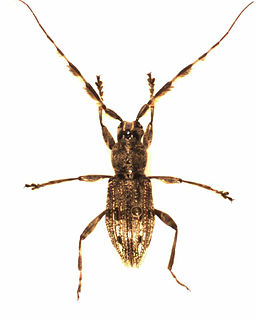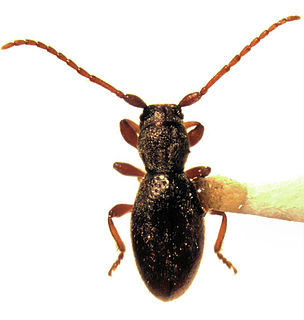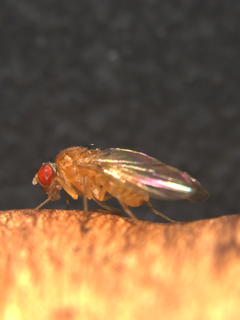Related Research Articles

Parmenini is a tribe of longhorn beetles of the subfamily Lamiinae.

Somatidia is a genus of longhorn beetles of the subfamily Lamiinae, containing the following species:
Somatidia nodularia is a species of beetle in the family Cerambycidae. It was described by Broun in 1913.
Somatidia spinicollis is a species of beetle in the family Cerambycidae. It was described by Broun in 1893.
Somatidia latula is a species of beetle in the family Cerambycidae. It was described by Broun in 1893. It contains the varietas Somatidia latula var. obesula.
Somatidia tenebrica is a species of beetle in the family Cerambycidae. It was described by Broun in 1893.
Somatidia maculata is a species of beetle in the family Cerambycidae. It was described by Broun in 1921.
Somatidia pennulata is a species of beetle in the family Cerambycidae. It was described by Broun in 1921.
Somatidia nitida is a species of beetle in the family Cerambycidae. It was described by Broun in 1880. It contains the varietas Somatidia nitida var. variegata.
Somatidia terrestris is a species of beetle in the family Cerambycidae. It was described by Broun in 1880. It contains the varietas Somatidia terrestris var. fuscata.
Somatidia parvula is a species of beetle in the family Cerambycidae. It was described by Broun in 1917.
Somatidia rufescens is a species of beetle in the family Cerambycidae. It was described by Stephan von Breuning in 1940.
Somatidia ampliata is a species of beetle in the family Cerambycidae. It was described by Stephan von Breuning in 1940. It is known from New Zealand.
Somatidia fauveli is a species of beetle in the family Cerambycidae. It was described by Stephan von Breuning in 1961. It is known from New Caledonia.
Somatidia kaszabi is a species of beetle in the family Cerambycidae. It was described by Stephan von Breuning in 1975.
Somatidia ptinoides is a species of beetle in the family Cerambycidae. It was described by Henry Walter Bates in 1874.
Somatidia helmsi is a species of beetle in the family Cerambycidae. It was described by David Sharp in 1882.
Somatidia australiae is a species of beetle in the family Cerambycidae. It was described by Carter in 1926. It is known from Australia.

Drosophila testacea is a member of the testacea species group of Drosophila. Testacea species are specialist fruit flies that breed on the fruiting bodies of mushrooms. Drosophila testacea can be found in temperate regions of Europe, extending to east Asia. Drosophila testacea and Drosophila orientacea can produce viable hybrids, though they are separated by geography and behavioural barriers. Drosophila testacea females will also readily mate with Drosophila neotestacea males, but viable hybrids are never produced. This hybrid inviability ) may be due to selfish X chromosomes and co-evolved suppressors. Alternately, differences in sex pheromone reception could underlie female readiness and male willingness to copulate.

The Drosophila testacea species group belongs to the Immigrans-tripunctata radiation of the subgenus Drosophila, and contains 4 species: Drosophila putrida, Drosophila neotestacea, Drosophila testacea, and Drosophila orientacea. Testacea species are specialist mushroom-feeding flies, and can metabolize toxic compounds in Amanita mushrooms. The Testacea species group is studied for its specialist ecology, population genetics, and bacterial endosymbionts. The North American species Drosophila neotestacea is perhaps the best-studied of the group for its interactions with parasitic wasps and nematodes, bacterial endosymbionts, and trypanosomatid parasites. Of note, selfish X chromosomes have been discovered in three of the four Testacea group species.
References
- ↑ BioLib.cz - Somatidia testacea. Retrieved on 8 September 2014.